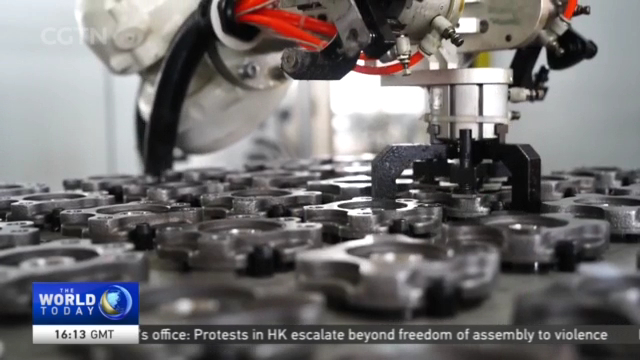
09:47, 07-Aug-2019
70 Anniversary of PRC: Manufacturers in Jilin Province stand out with core technologies
Updated
12:02, 07-Aug-2019

China's northeast was once the pride and birthplace of the country's industrial development. But as reform accelerated in the 1990's the region struggled to adjust and regain its competitiveness. In Jilin Province, technology has become a new driving force of regeneration. CGTN's Feng Yilei has more.
China's next-generation high-speed train is in the home stretch of testing and completion. It will serve the 2022 Winter Olympics, on the line linking two host cities of Beijing and Zhangjiakou. The train, expected to run at a maximum speed of 350 kilometers per hour, is assembled at China's leading production base in Jilin province.
DENG HAI, SENIOR ENGINEER CRRC CHANGCHUN RAILWAY VEHICLES "This car marks a huge leap for China's EMU trains. It cuts 7% of energy consumption and has the new automated operation mode. We are now the only one in the world that manages self-driving high-speed trains."
Throughout the past half century, the manufacturer has faced big challenges in overcoming technological bottlenecks, before it managed to produce China's first metro car, first magnetic-levitation train and first EMU train. And now, the company is ready to compete with the world's railway vehicle manufacturing giants- with not just a low price but also outstanding performances.
DENG HAI, SENIOR ENGINEER CRRC CHANGCHUN RAILWAY VEHICLES "Now we have one of the world's fastest high-speed trains. And based on that experience, we aim to be a standard setter that leads the world. Many of our systems have already gained popularity in the global market."
And it's not just about ground transportation, the made-in-Jilin brand name is also winning in space. China's recently-launched Jilin-1 03A satellite is by far the lightest and lowest-cost among commercial satellites of one-meter high resolution.
WANG DONG, DEPUTY GENERAL MANAGER CHANG GUANG SATELLITE TECHNOLOGY "It's smaller, lighter, more reliable and requires less power. The cost of establishing a whole satellite constellation is further reduced. We planned to put 138 satellites in orbit by 2030, and under the new scheme we can get 100 done by 2022."
The local satellite industry has been supported by regional subsidies and brain gain policies. And with that, the Chang Guang manager says they can further delve into their core technology. Now a series of Jilin-1 satellites can provide detailed remote sensing services for the government, companies, and participants in the Belt and Road Initiative.
WANG DONG, DEPUTY GENERAL MANAGER CHANG GUANG SATELLITE TECHNOLOGY "We actively meet the standards of users in the industry while keeping innovating the way of application. We can give remote sensing information service to the mass public via networks. It will be one of our key directions and will have build-up effects."
Successful Jilin companies like Chang Guang and CRRC Railway Vehicle in turn bring opportunities to more high-tech players in the supply chain. That will lay a sound ground for the speed and quality of Jilin's reinvigoration- faster than a bullet train and higher than a satellite. Feng Yilei, CGTN, Changchun, Jilin Province.
SITEMAP
Copyright © 2018 CGTN. Beijing ICP prepared NO.16065310-3
Copyright © 2018 CGTN. Beijing ICP prepared NO.16065310-3